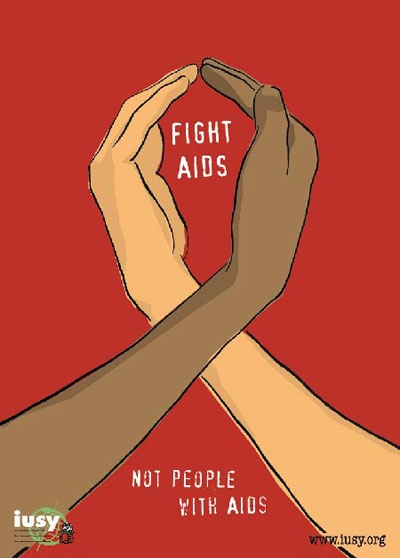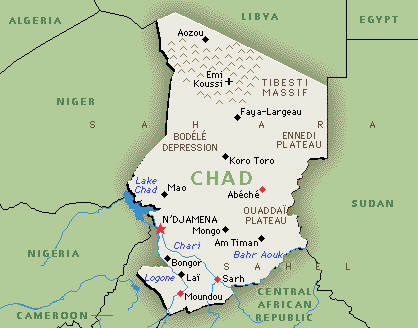
Photo Credit: RBCT
One of the leading programs with interest in the way HIV/AIDS is affecting the environment and natural resource management (NRM) activities is the USAID’s Africa Biodiversity Collaborative Group (ABCG).
ABCG, as a result, has initiated a number of communication strategies to combat the negative impact of HIV/AIDS on the environment. On this 2011 World’s AIDS Day, I find it appropriate to reflect on the role of information and communication technologies (ICTs) in increasing the effectiveness of communication strategies for combating negative impacts of HIV/AIDS on the environment.
Impacts of HIV/AIDS on the Environment and Natural Resource Management Activities
According to ABCG, HIV/AIDS has impacted the conservation workforce, conservation activities, and finances of conservation government agencies, non-governmental organizations (NGOs) and communities. The pandemic has caused accelerated rates of illnesses and deaths among park wardens, rangers, community game guards, senior officials and other conservation personnel; accelerated rates of payment of terminal benefits by conservation government agencies; created competition for scarce financial resources between HIV/AIDS demands and conservation activities; led to accelerated and unsustainable rates of harvesting of medicinal plants and wildlife; is destroying communal social structures on which community-based natural resource management (CBNRM) is based; and has led to land use changes in some places.
The program has identified the following key impacts of the HIV/AIDS pandemic on natural resource management:
- Changes in land use as agricultural practices change with falling capacity for heavy labor,
- Changes in access to resources and land especially when widows and AIDS orphans cannot inherit land,
- Loss of traditional knowledge of sustainable land and resource management practices,
- Increased vulnerability of community-based natural resource management programs as communities lose leadership and capacity, and HIV/AIDS issues take priority, and
- Diversion of conservation funds for HIV/AIDS related costs.
ABCG’s Communication Strategies and the Role of ICTs
With the above recognized negative impacts of HIV/AIDS on the environment and natural resource management, ABCG has agreed that ICTs are uniquely positioned to help increase the impacts of their communication strategies. Some of the current approaches being used include:
- The use of its website with updated materials including PowerPoint presentations, papers, and web links on case studies conducted on HIV/AIDS and environmental conservation.
- Networking among the regional partners to share useful information on the issue.
- Workshops
- International Conferences
- AIDS and Conservation Posters by ABCG
So how can ICTs be integrated into these strategies for effective impact on HIV/AIDS?
Looking at the great potentials of ICTs for knowledge and information sharing, the current communication approaches by ABCG may have limited use of ICTs for sharing knowledge on best practices about HIV/AIDS and the environment. A host of the emerging social media tools and platforms are excellent avenues for partners to share information on HIV/AIDS and environmental conservation activities thereby facilitating the work of ABCG in its fight for environmental conservation.
a) Blogs taking the form of a diary, journal, and links to other websites could be great tools for sharing and creating awareness of HIV/AIDS on the environment.
b) Twitter accounts can be used to share instant updates from friends, industry experts, favorite celebrities, and others of the impact of HIV/AIDS on the environment, the prevention strategies, and what’s happening around the world with specific focus on natural resource management and HIV/AIDS.
c) Social networking applications like Facebook with pages specifically created on the issue could help bring like-minded individuals and organizations together to discuss the issue online.
d) Events such as Meetup.com and free Wibinar applications such as WebEx channels may be used to connect partners and advocates together to share information and knowledge on HIV/AIDS and the environment.
e) Wikis pages are great knowledge management and collaborative tools that could be used to capture, find, share, and use information on HIV/AIDS and environmental conservation. Wikis help keep knowledge current, dynamic, and safe for members.
f) Photo sharing applications like Flicker, Picasa, Fotki, Mobile Me, Windows Live SkyDrive could be used to share real-time updates on HIV/AIDS and environment through images.
g) Video sharing tools like YouTube could be used to create awareness of the danger of HIV/AIDS on the environment.
h) Professional networking tools like LinkedIn may bring together experts from the various fields – HIV/AIDS, NRM, Climate Change, among others to discuss the issue.
When the necessary ICT policies and infrastructure are put in place among the ABCG collaborating partners and the regional networks, the use of these applications should not be an obstacle to information sharing on HIV/AIDS and the environment.














 Of late, the North Central African nation of Chad (Tchad) has remained out of the international spotlight. Chad has also been on the periphery of the African tech scene. Libya and Sudan, neighbors to the north and east, respectively, have “stolen” much of the African news. And that is not necessarily a bad thing – life in Chad is seemingly stable. However, it is going to take more than status quo to improve the quality of life in Chad.
Of late, the North Central African nation of Chad (Tchad) has remained out of the international spotlight. Chad has also been on the periphery of the African tech scene. Libya and Sudan, neighbors to the north and east, respectively, have “stolen” much of the African news. And that is not necessarily a bad thing – life in Chad is seemingly stable. However, it is going to take more than status quo to improve the quality of life in Chad.



































